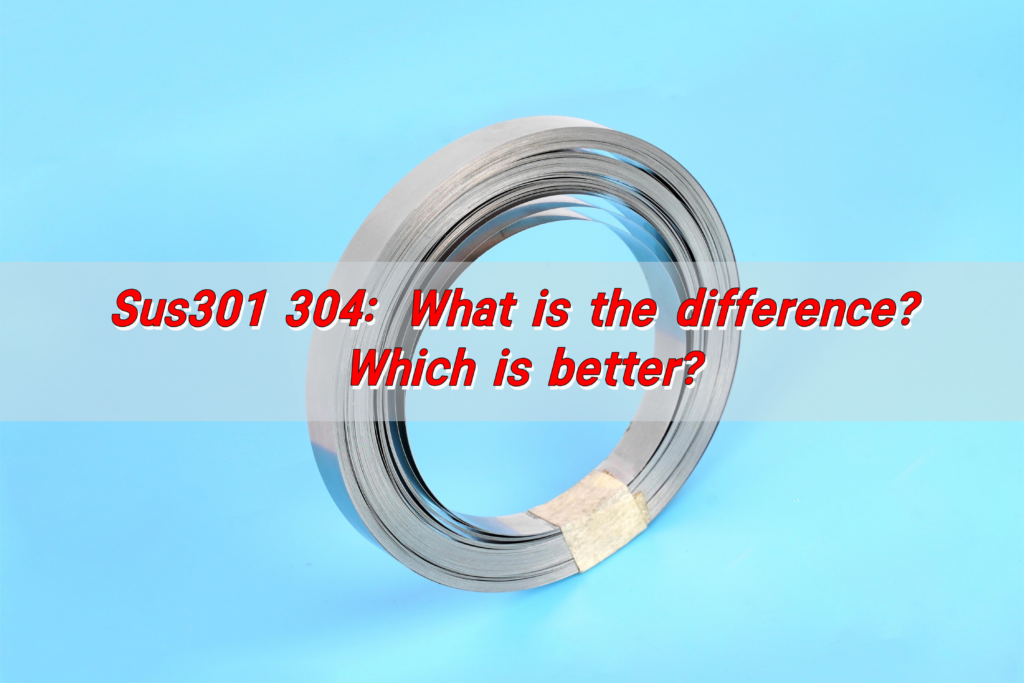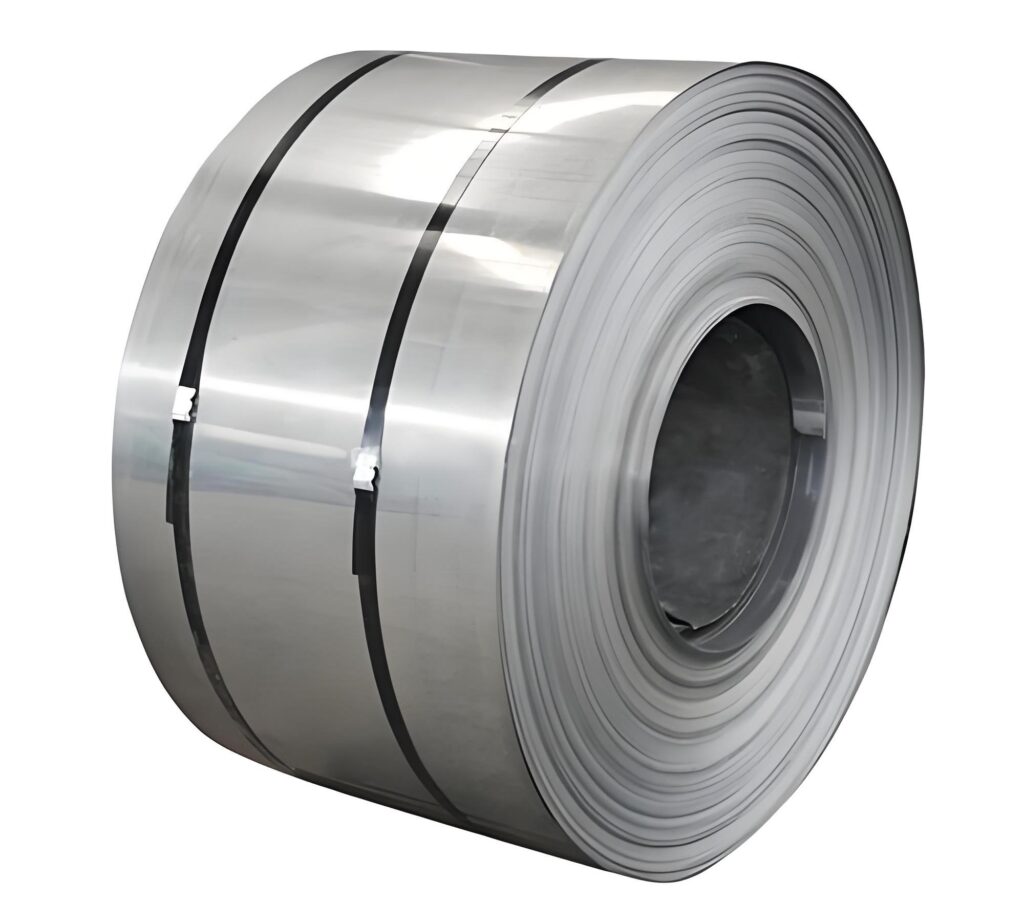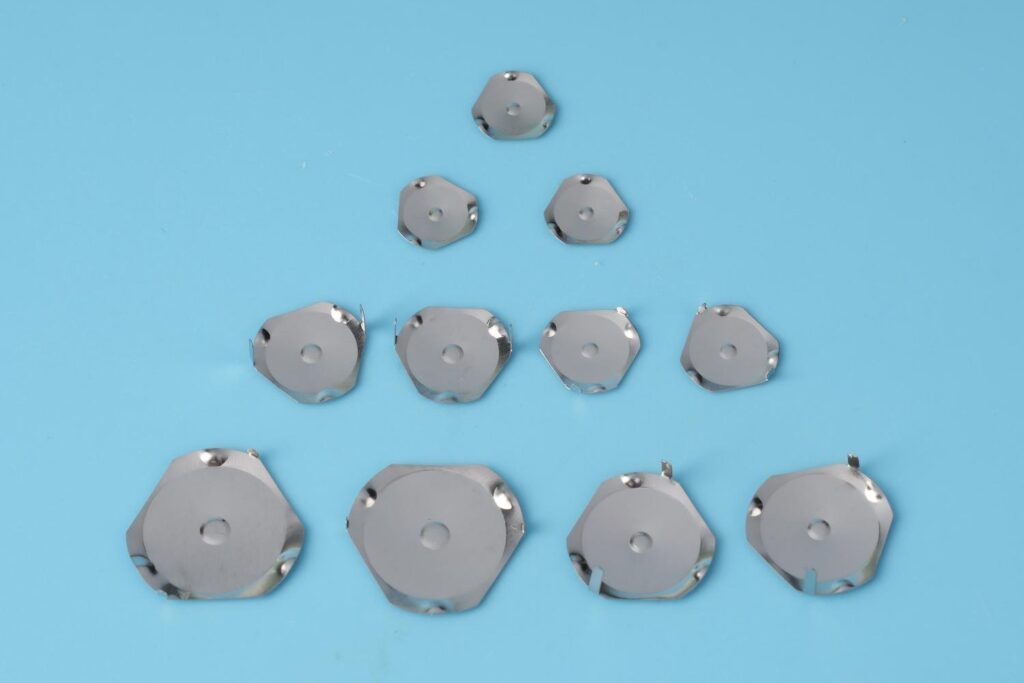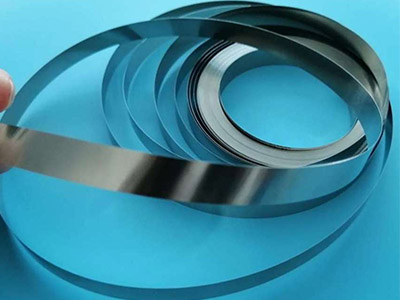SUS301 and SUS304 are common stainless steel materials. SUS301 contains 16-18% chromium and 6-8% nickel, has high strength and good elasticity, and is suitable for making springs and fasteners. SUS304 contains 18-20% chromium and 8-10.5% nickel, has strong corrosion resistance and good ductility, and is suitable for humid environments and scenes that require welding. The choice depends on the application requirements: SUS301 is suitable for dry environments that require strength and elasticity, while SUS304 is suitable for complex environments that require high corrosion resistance.
What is SUS301 material?
SUS301 is a type of austenitic stainless steel known for its high strength and flexibility. It contains lower nickel content than SUS304, which allows it to achieve higher strength through cold working. This means the more you bend or roll it, the tougher it becomes. Its typical composition includes 16–18% chromium and 6–8% nickel, which offers moderate corrosion resistance and excellent mechanical properties.
SUS301 is not just strong—it is also lightweight and formable. This makes it ideal for parts that require repeated flexing, such as springs, clips, and metal domes. It can withstand repeated use without losing shape. Its elasticity and fatigue resistance are two of the biggest reasons it’s used in electronic switches and precision hardware.
It’s also important to note that SUS301 is magnetic in all conditions. This can be useful in applications where magnetic properties are required.
What does SUS304 mean?
SUS304 is the most commonly used stainless steel in the world. Often referred to as 18/8 stainless steel, it contains 18% chromium and 8% nickel. This specific blend makes it highly resistant to rust and oxidation, especially in humid or chemical-rich environments.
The material is popular for its combination of formability, weldability, and long-term durability. You’ll find it in kitchen appliances, food processing equipment, chemical containers, and medical tools. Its bright surface and non-corrosive nature make it a go-to material for industries that demand hygiene and a clean appearance.
SUS304 is non-magnetic in its annealed state, but may become slightly magnetic after cold working. This characteristic makes it especially suitable for decorative parts and machinery with sensitive electronics.
Is SUS304 stainless steel good quality?
Yes, SUS304 is considered a high-quality stainless steel by industry standards. Its wide use in critical industries like food, medical, and construction speaks volumes about its reliability. It’s known for its strong resistance to chemicals, acids, and moisture.
What makes it even more appealing is its balance. It is not the hardest material, but it’s strong enough. It’s not the most flexible, but it bends well. It resists rust, cleans easily, and maintains its appearance over time.
If you’re looking for a material that offers a clean look, is easy to maintain, and performs well, SUS304 is a solid choice.
What is SUS304 material standard?
SUS304 is defined under the Japanese Industrial Standard (JIS G4303). This specification outlines its chemical composition, mechanical properties, and tolerance limits.
International equivalents of SUS304 include:
- AISI 304 (American standard)
- DIN 1.4301 (German standard)
- EN X5CrNi18-10 (European standard)
Each standard reflects the same basic chemistry but may differ slightly in tolerances or testing procedures. The global acceptance of this grade confirms its strong performance across various regulations.
What are the weakness of 304 stainless steel?
Although SUS304 is versatile and reliable, it does have a few weak points. The most notable is its susceptibility to chloride corrosion. In environments with high salt levels, like marine areas or places with de-icing salts, SUS304 may pit or corrode over time.
It also does not gain strength through heat treatment. So for applications that demand high mechanical strength, it may fall short unless cold worked. Its yield strength is lower compared to SUS301, which limits its use in high-stress or dynamic components.
Another downside is its price. While it’s more affordable than exotic alloys, it’s still more expensive than basic carbon steels, especially when high volumes are needed.
What is the toughest stainless steel?
Toughness is not just about resistance to breakage—it’s about handling stress and strain without failure. In this comparison, SUS301 stands out. It becomes significantly tougher through cold working, which enhances its mechanical properties without adding weight.
In thin-walled components or flexing parts like metal domes, SUS301 delivers superior toughness. It can absorb energy, snap back into shape, and repeat this action thousands of times without fatigue.
That’s why it is used in precision electronic devices, switches, and flexible mechanical parts. If toughness under repetitive stress is your top requirement, SUS301 is the better choice.
What is the difference between SS and SUS?
SS and SUS refer to stainless steel, but their usage depends on geography and standards. “SS” stands for Stainless Steel and is commonly used under the American Iron and Steel Institute (AISI). “SUS” stands for Steel Use Stainless, a term used in the Japanese Industrial Standards (JIS).
The difference lies in naming, not material. For example:
- AISI 304 = SS304
- JIS G4303 = SUS304
They refer to the same alloy but follow different national standards. When importing or exporting materials, checking both names ensures you’re working with the correct grade.
Which is better SUS304 or SS304?
Technically, SUS304 and SS304 are the same material, just listed under different standards. If you’re buying from Japan or Asian countries, SUS304 is the name you’ll see. If sourcing from the U.S. or Europe, you’ll likely see SS304.
The choice comes down to certification, supplier reliability, and end-use. For high-performance or export-focused products, verifying compliance with multiple standards is a smart move.
For metal dome applications, where performance matters more than labeling, both offer consistent quality—as long as they meet the proper standard.
What is the material of metal dome?
The ideal material for metal domes is SUS301 stainless steel. Because these small, tactile components must handle constant pressure, flexing, and quick rebound. SUS301 delivers all of this. Its excellent elastic recovery and high fatigue resistance make it perfect for these functions.
Unlike SUS304, SUS301 can be cold worked to improve strength and springiness without becoming brittle. This is critical for components that need to snap back to their original shape every single time.
SUS304, while strong and corrosion-resistant, lacks the necessary flexibility and snap force needed in dome applications. Therefore, if you’re manufacturing membrane switches or precision buttons, SUS301 is the superior choice.
Conclusion:
SUS301 and SUS304 are both excellent stainless steels—but they serve different purposes. SUS301 is strong, elastic, and ideal for moving parts like metal domes. SUS304 is corrosion-resistant, stable, and great for long-lasting structural use.
If your application demands flexibility and mechanical strength, choose SUS301. If it requires durability and cleanliness, SUS304 is your answer.
For professional advice and high-quality metal dome materials, contact us today: sales@metal-domes.com








